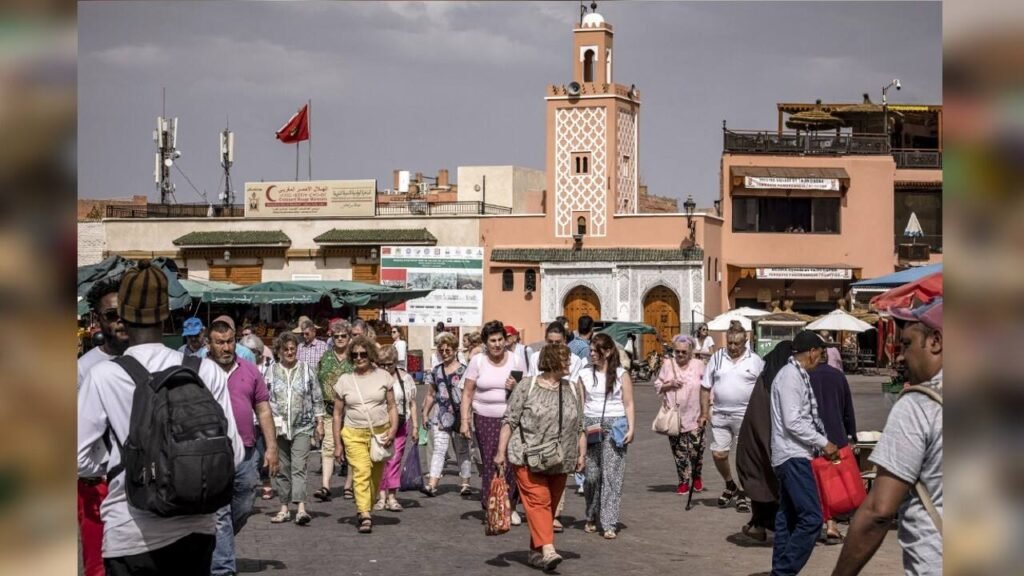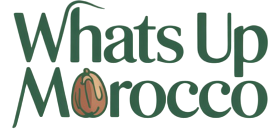
Morocco, a land of rich history, diverse landscapes, and vibrant cultures, has long captivated travelers from around the world. From the bustling souks of Marrakech to the serene dunes of the Sahara, it is a destination that promises adventure, authenticity, and unforgettable experiences. But like many countries reliant on tourism, Morocco faced unprecedented challenges during the COVID-19 pandemic. As borders reopened and travel gradually resumed, the country embarked on a remarkable journey of recovery, adaptation, and reinvention.
In this comprehensive exploration, we’ll delve into how Morocco is bouncing back from the pandemic’s blow, the strategies employed by its tourism sector, the evolving traveler experience, and what the future holds. Whether you’re a seasoned traveler, a tourism professional, or simply curious about Morocco’s resilience, this post offers insights, analysis, and practical advice to understand and participate in Morocco’s post-pandemic revival.
The Impact of COVID-19 on Morocco’s Tourism Sector
Morocco’s economy is heavily dependent on tourism, accounting for roughly 7% of its GDP and employing millions. Pre-pandemic, 2019 was a record year with over 13 million international visitors, drawn by its historic medinas, starry deserts, and scenic coastlines. But the onset of COVID-19 in early 2020 brought this momentum to a halt. Borders closed, flights canceled, and the country’s tourism infrastructure faced immense strain.
According to the Moroccan Ministry of Tourism, the sector experienced a sharp decline of over 70% in international arrivals during 2020. Iconic sites like the Jemaa el-Fnaa square and the ancient city of Fes saw empty streets, and many small businesses faced financial hardships. Hotel occupancy rates plummeted, and employment in tourism-related industries was severely affected. The pandemic underscored Morocco’s vulnerabilities but also highlighted opportunities for resilience and innovation.
How Morocco Is Rebuilding Its Tourism Industry
Recovery isn’t just about reopening borders; it’s a comprehensive process involving health protocols, marketing strategies, infrastructure upgrades, and community engagement. Here are some key approaches that Morocco has taken:
Health and Safety Protocols: Building Traveler Confidence
Recognizing that safety is paramount, Morocco implemented strict health measures aligned with global standards set by organizations like the WHO. Hotels, airlines, and tourist attractions adopted enhanced sanitation protocols, contactless check-ins, and social distancing guidelines. The Moroccan Ministry of Health launched awareness campaigns to reassure visitors about safety measures, which is crucial in restoring traveler confidence.
Digital Transformation and Contactless Experiences
The pandemic accelerated digital adoption across Morocco’s tourism sector. Many hotels and tour operators developed online booking systems, virtual tours, and contactless payment options. The adoption of mobile apps for health declarations and digital guides helped streamline visitor experiences while minimizing physical contact.
Targeted Marketing and Domestic Tourism
In the immediate aftermath, Morocco prioritized domestic tourism to sustain local businesses. Campaigns like “Morocco From Home” and promotions encouraging Moroccans to explore their own country helped bridge the gap until international travel could fully resume. As international borders began to reopen, marketing shifted focus to regional markets like Europe, the Middle East, and North Africa.
Infrastructure and Sustainability Investments
Morocco is leveraging this period to invest in sustainable tourism infrastructure. Projects include upgrading airports, improving road networks, and developing eco-friendly accommodations. The country’s commitment to sustainability is reflected in initiatives to protect natural and cultural heritage, aligning with global trends toward responsible tourism.
The Evolving Traveler Experience in Post-Pandemic Morocco
As Morocco gradually reopens, travelers are noticing shifts in the tourism landscape. Here’s what to expect:
Enhanced Safety and Hygiene Standards
Visitors can now expect rigorous health measures at hotels, restaurants, and attractions. Many establishments prominently display safety certifications, and travelers are encouraged to follow local guidelines. This emphasis on hygiene not only ensures safety but also enhances the overall quality of the experience.
Increased Focus on Sustainable and Responsible Tourism
Travelers are increasingly seeking authentic, eco-friendly experiences. Morocco’s initiatives to promote eco-lodges, community-based tourism, and conservation projects resonate with eco-conscious visitors. Engaging with local communities offers richer experiences and supports sustainable development.
Personalization and Off-the-Beaten-Path Adventures
With crowds less dense in popular sites, travelers are exploring lesser-known areas such as the Oukaïmeden ski resort, Tinghir’s Todra Gorge, or the coastal town of Essouira. Customized tours, private guides, and boutique accommodations are on the rise, offering more intimate and personalized experiences.
Digital and Contactless Services
From virtual check-ins to mobile-guided tours, technology plays a pivotal role. Many tour operators now offer online booking and real-time updates about health measures and site conditions, making planning smoother and safer.
Challenges and Opportunities in Morocco’s Tourism Revival
While Morocco’s recovery plan is promising, several hurdles remain:
- Global Travel Uncertainty: Variations in COVID-19 variants, travel restrictions, and vaccine rollout disparities continue to impact international arrivals.
- Infrastructure Gaps: Remote regions require further investment to support increased tourism sustainably.
- Environmental Concerns: Higher visitor numbers risk environmental degradation if not managed properly.
- Cultural Preservation: Balancing tourism growth with the preservation of Morocco’s rich cultural heritage is critical.
However, these challenges also present opportunities:
- Developing eco-tourism and community-based tourism to foster sustainable growth.
- Leveraging digital marketing to reach targeted markets more effectively.
- Enhancing training programs for hospitality staff to improve service quality.
- Promoting cultural festivals and events to attract visitors during off-peak seasons.
Comparing Key Aspects of Morocco’s Tourism Recovery
| Aspect | Pre-Pandemic | During Pandemic | Post-Pandemic Recovery Focus | Future Outlook |
|---|---|---|---|---|
| International Arrivals | 13 million (2019) | Declined 70% in 2020 | Rebuilding through targeted marketing | Expected to reach pre-pandemic levels by 2025 with sustainable growth |
| Key Markets | Europe, USA, Middle East | Restricted borders, local focus | Regional campaigns, digital outreach | Diversification into new markets and niches |
| Infrastructure | Well-developed in cities | Strained in remote areas | Upgrades and eco-infrastructure | Smart, eco-friendly tourism hubs |
| Traveler Experience | Authentic, cultural immersion | Health concerns, limited access | Safer, personalized, eco-conscious | Innovative, responsible tourism experiences |
Expert Insights: What Tourism Leaders Say
According to reports from the World Tourism Organization (UNWTO), Morocco’s recovery hinges on building resilience and embracing innovation. Tourism experts emphasize that digital transformation, community engagement, and sustainable practices will shape Morocco’s future as a premier destination.
Moroccan tourism authorities have also underscored the importance of public-private partnerships to boost investments and adapt swiftly to changing circumstances. The country’s rich cultural assets and natural beauty remain its strongest assets, but their preservation and responsible promotion are essential.
Actionable Tips for Travelers Considering Morocco Post-COVID
- Research and Book in Advance: Secure accommodations and tours that adhere to safety standards.
- Support Local Communities: Choose eco-friendly lodges and community-run tours.
- Stay Informed: Check the latest travel advisories and health protocols from official sources like the Moroccan Ministry of Tourism.
- Embrace Off-the-Beaten-Path Destinations: Explore lesser-known towns and natural parks to avoid overcrowding.
- Practice Responsible Tourism: Respect local customs, reduce waste, and support conservation efforts.
A Glimpse Into Morocco’s Post-Pandemic Future
Morocco’s journey to recovery exemplifies resilience and adaptability. Its commitment to safety, sustainability, and innovation positions it well for a vibrant tourism future. As the country continues to rebuild, it offers travelers an opportunity to experience its authentic charm with a new perspective—one rooted in responsible exploration and cultural appreciation.
The next decade promises a reimagined Morocco: more sustainable, more inclusive, and more captivating than ever. Whether you’re planning your first visit or returning for a new adventure, now is the perfect time to rediscover this magical land.
Fascinating Facts & FAQs
Fascinating Facts
- Morocco is home to more UNESCO World Heritage Sites than any other African country, including ancient medinas, kasbahs, and archaeological sites.
- The Sahara Desert in Morocco is about 40,000 square miles, offering some of the best camel trekking experiences.
- The city of Fes is renowned for its medieval labyrinth of streets, many of which haven’t changed in centuries.
Frequently Asked Questions
Q: When will Morocco fully recover its pre-pandemic tourism numbers?
A: Experts estimate that by 2025, Morocco could reach or surpass its 2019 visitor numbers, especially if global travel stabilizes and sustainable practices are prioritized.
Q: Are there any health entry requirements for travelers?
A: Yes, travelers should check the latest regulations, which may include vaccination certificates, negative COVID-19 tests, or health declarations, often available on the official Moroccan Ministry of Health website.
Q: What regions are best for eco-tourism in Morocco?
A: The Atlas Mountains, the coastal town of Essaouira, and the Sahara’s desert camps are excellent eco-friendly destinations that promote sustainable tourism.
Q: How has Moroccan culture adapted to the pandemic?
A: Many cultural festivals and events have shifted online, and local artisans are increasingly selling their crafts digitally, helping preserve and promote Morocco’s rich heritage.
Conclusion: Embracing a New Chapter
Morocco’s tourism sector has faced formidable challenges, yet its story is one of resilience, reinvention, and hope. The collective efforts of government agencies, local communities, and the private sector are transforming the country into a safer, more sustainable, and more innovative destination. For travelers, this means an opportunity to enjoy authentic experiences in a responsible way, contributing to Morocco’s ongoing recovery.
As we look ahead, the lessons learned during this crisis will undoubtedly shape a more resilient and sustainable tourism industry—one that preserves Morocco’s enchanting landscapes and cultural treasures for generations to come. Whether you’re dreaming of wandering through the historic streets of Marrakech or gazing at the starry Sahara night, Morocco invites you to be part of its exciting new chapter.
Next steps: Consider planning your visit with reputable tour operators, supporting local initiatives, and staying informed about global travel trends. Morocco’s magic awaits—ready for you to explore anew.
Embark on your journey, support responsible tourism, and help Morocco write its next chapter of vibrant, sustainable growth.
